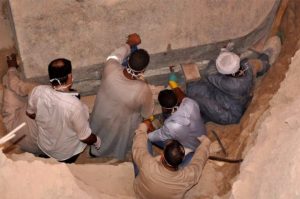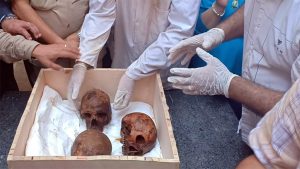Religion and religious practices were key components of ancient Egyptian society. This fact can be traced through different aspects of ancient Egypt. Mortuary or Burial practice is one of them. This article is going to elaborate on newly recovered evidence related to the mortuary practices of ancient Egyptians.
What Do Mortuary Practices Refer
Mortuary practices refer to those activities which are associated with the disposition of the dead. In ancient Egypt, the Sarcophagus of both decorated and non-decorated variety were extensively used to be used to dispose of dead bodies.
These sarcophaguses were used to be kept in the tombs. The tomb of Tutankhamun is a great example of the magnificent mortuary practice of ancient Egyptian civilization.
Alexandria at a Glance
The city of Alexandria has been named after the king Alexander the Great. He started his rule as a king of Macedonia from 334 BCE. After conquering Egypt, he founded the city of Alexandria which flourished as an important center of the polity as well as the economy at that time.
Recent Discovery in Alexandria
Recently, at the starting of the month of July 2018, an Egyptian Archaeological Mission recovered a tomb along with a large Sarcophagus at an ancient site in Sidi Gaber district in the Egyptian Coastal Province of Alexandria. The sarcophagus was found located approximately 16 feet underground.

After the discovery, it was assumed to belong to the Ptolemaic era which began after the death of Alexander the Great. The antiquity of this sarcophagus has been established to more than 2000 years back by the archaeologists.
Raw Material & Architecture
The raw material which was used to build the large sarcophagus is black colored granite stone. It is 265 cm long, 185 cm high and 165 cm wide. It weighs in at approximately 27 tonnes.
The Major Findings
An alabaster head of a man has been found near the sarcophagus. At the initial stage, it was believed that it might belong to the owner of the tomb. And also archaeologists hoped to discover the remains of Alexander the Great in the sarcophagus but later on, the findings did not come with satisfactory evidence of this hypothesis of the archaeologists.

During the second half of the month of July 2018, Egypt’s Supreme Council of Antiquities (SCA) decided to open the seal of the sarcophagus., Thus experts from the different fields were assigned to this work. And lastly, it has been successfully opened and skeletons of three persons were found inside the sarcophagus.

These mummies were not preserved in its best condition. Thus, only the bones were found. Along with the skeletal remains, a lot of red colored liquid sewage has also been found. Thus, the skeletons were in a decomposed position.



Further Investigation
At the initial stage of the discovery of this sarcophagus, great attention was made to it as it was thought to belong to Alexander the Great but later discoveries came with another assumption. According to the archaeologists who were engaged with this discovery, these three skeletons may belong to a family and this tomb may indicate a family burial.
Presently, these skeletal remains were taken to a museum in Alexandria for further investigations. According to Egypt’s Ministry of Antiquities, these skeletons do not appear to belong to any royal families as valuable grave goods were not found along with them. Thus, we have to wait until the application of all possible scientific techniques to uncover the possible real mystery behind this sarcophagus.
Recent Study
Recent researches reveal that these three skeletons may belong to three soldiers. The evidence of surgical procedure also has been noticed through the presence of a hole in one of the three skulls. This surgery is the oldest surgical intervention ever known since pre-history but was rare in Egypt.
